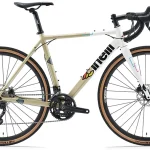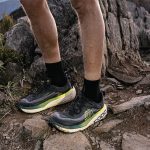Outdoor Industry Association announced the availability of its most recent “Top Line Retail Sales Report Detailed Findings” which is published bi-annually for OIA members. According to this study, 2004 dollar sales of outdoor recreation products through the Outdoor Specialty retail channel and Outdoor Chain retail channel were up 8.5% over 2003 sales numbers.
The OIA study, which provides in-depth coverage of the winter sales season of August 2004 through January 2005, compares sales receipts information for that same period in 2003, indicating that overall sales figures for these six months are up 4.7% in Specialty stores and up 5% in Outdoor Chain stores. During the same period, there was a decline in units sold by 4.8% in Specialty and 5.6% in Outdoor Chain stores. This is a shift from previous years where revenue and unit sales moved in parallel, indicating that consumers are buying higher priced merchandise via these channels than they were in prior audits.
The study covers sales receipt information for the 12-month period of February 2004 to January 2005 compared to the same period February 2003 to January 2004.
12-month dollar sales for the outdoor segment through Outdoor Specialty stores were $2.23B in 2004 compared to $2.1B in 2003 (an increase of 6% year over year).
12-month dollar sales for Outdoor Chain stores were $3.8B in 2004, up 9.8% from $3.5B in 2003.
Total combined revenue for both channels increased a total of 8.5% from 2003 to 2004.
- 5 distinct retail sales channels comprise 2004 total outdoor products revenue: ($12.3 Billion)
- Outdoor Specialty 18.1% of total revenue ($2.2 Billion)
- Outdoor Chain 30.9% of total revenue ($3.8 Billion)
- Internet/Catalog 12.9% of total revenue ($1.59 Billion)
- Department Store 20.4% of total revenue ($2.5 Billion)
- General/Mass Discount 17.7% of total revenue ($2.17 Billion)
- 5 distinct product categories are totaled to calculate total 2004 revenue.
- Apparel (outerwear, sportswear, rainwear, baselayers, accessories)
- Footwear (boots, multi-sport, trail runners, casual outdoors, sandals)
- Equipment (tents, sleeping bags, packs, climbing gear, winter equipment)
- Equipment Accessories (luggage/duffels, hydration, poles, food, stoves, lights, first aid, instruments, sunglasses, sport racks and other)
Paddle (equipment, apparel, accessories)
The study covers the winter sales season of August 2004 through January 2005, comparing sales receipt information from Outdoor Specialty and Outdoor Chain to that obtained in the same period August 2003 through January 2004. For the first time, sales receipts were captured for the Internet/Catalog channel.
Overall sales figures for winter season 2004 were up 4.7% in Outdoor Specialty stores and up 5% in Outdoor Chain stores. Units sold declined by 4.8% in Specialty and 5.6% in Outdoor Chain during the winter season. Average retail selling price (ASRP) was up by category (apparel, equipment, equipment accessories, footwear and paddle) in both channels with the exception of footwear via Specialty stores. This dynamic is a change from prior years and indicates that consumers are buying fewer items, but higher priced merchandise, via these channels than they were in prior audits.
Apparel led the 6-month winter period, accounting for 50% of all product sales through Chain Stores, Specialty Stores and Internet/Catalog combined, in addition to having overall revenue growth and ARSP growth. Outerwear tops represented 62% of all Internet/Catalog revenues and made up $677M of revenue across these three channels. Womens specific apparel sales were strong across the board.
Footwear showed strong revenue growth (15%) and unit sale growth (14%) with increases in sandals, womens shoes, and casual outdoor shoes.
Equipment revenues and unit sales were both down in Outdoor Chain and Specialty stores. Products sold via Internet/Catalog and Specialty were higher priced, more technical products while Chain stores focused on less expensive, less technical products. Specialty stores saw declines in climbing gear and winter equipment while Chain stores saw declines in tents and bags.
Equipment accessories decreased sharply in unit sales with dollar sales only down slightly. Product mix within this category shifted to higher priced accessories like instruments (including GPS and watches)
Paddle revenue made up 3% of total outdoor industry revenues with strong growth in unit and dollar sales via Specialty stores and declining unit and dollar sales in Outdoor Chain. Internet/Catalog represents only a small portion (5%) of overall paddle sales.
“These audit results show changes in consumer behavior and preference. While overall sales are growing, the specific products that make up their “shopping cart” have shifted.” said Frank Hugelmeyer, President of OIA.
The Top Line Retail Sales Report also offers socio-economic findings that help put the sales information into perspective. These findings include:
- Women are responsible for 80% of household purchases and last year, these consumers discovered women specific apparel. Women are buying more because they are doing more fitness and outdoor activities and both trends contribute to this growth in womens product sales. The trend of women demanding performance apparel for their active lifestyle points to opportunity as these consumers are willing to pay a higher price to get what they want.
- Performance, innovation and comfort defined fashion for 2004. Higher priced outerwear and shoes sold well. Innovation in apparel, including new performance material and design enhancements led to higher average selling prices.
- Consumers are buying higher priced merchandise via the Internet/Catalog channel. It could be consumers who shop the Internet are enthusiasts looking for premium products and therefore the average retail selling price by category is higher.
- The number one reported barrier to outdoor recreation participation is lack of time. New products that are “fast and light” create opportunities for participants to pack more into available time. Interestingly, hydration packs sales were down during this period.
“Americans are adopting outdoor apparel/footwear into their daily wear with women leading the charge. The bottom line is that Americans are involved in the outdoor lifestyle and are willing to spend money on products that represent that lifestyle.” added Hugelmeyer.
This report is the most recent retail sales trend study published by OIA. It was produced for OIA by The Leisure Trends Group, Boulder, CO. The study focuses on point of sale information from Outdoor Specialty, Chain stores, and Internet/Catalog and supplements with consumer estimates of two additional retail channels General/Mass Merchants and Department Stores to create a total industry estimate of the outdoor market. Beginning with the Fall 2005 report, a full year of Internet/Catalog POS data will be available. Two separate reports are available on www.outdoorindustry.org for OIA members an Executive Summary and the Full Topline Retail Sales Audit Detailed Findings.















